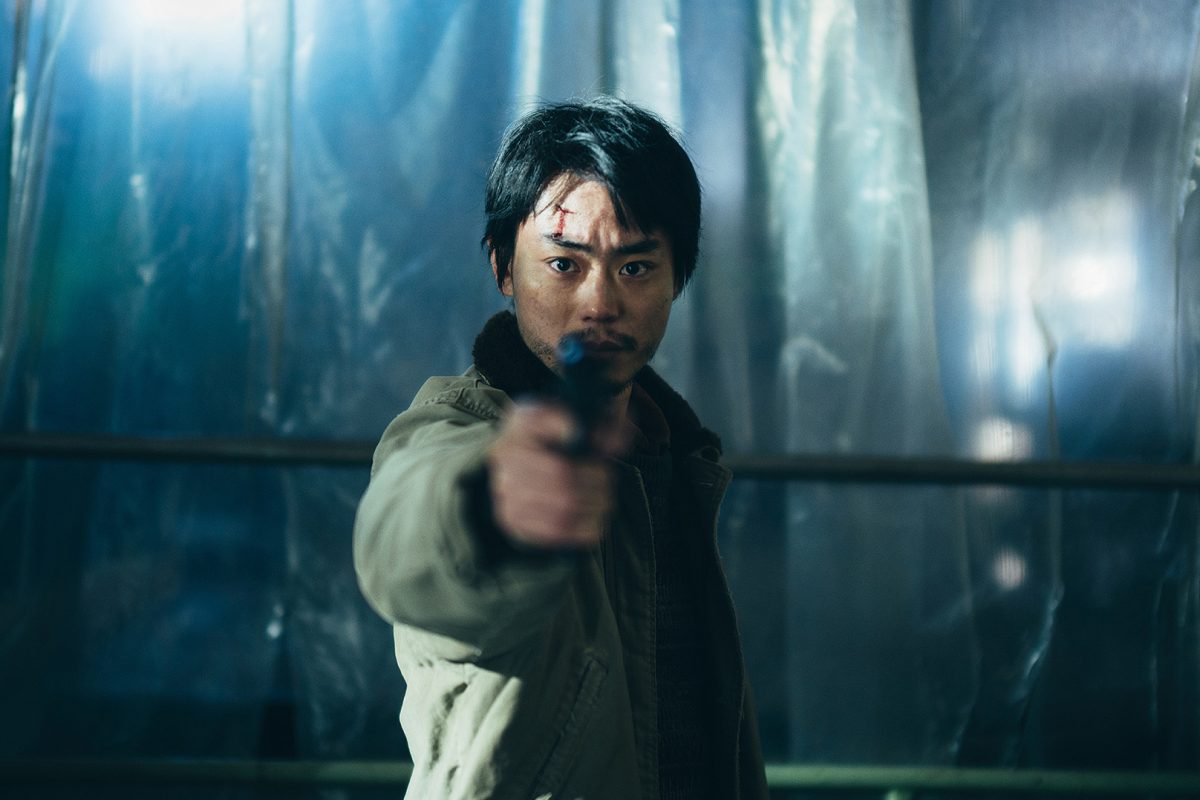
The following notes on Kiyoshi Kurosawa’s Cloud were written by Nimish Sarin, PhD candidate in the Department of Communication Arts. A 7 p.m. screening of Cloud on Thursday, September 11 kicks off the Cinematheque’s latest series of Premieres. Screening location is 4070 Vilas Hall, 821 University Ave. Admission is free, seating is limited.
By Nimish Sarin.
One of three films the veteran Japanese director Kiyoshi Kurosawa completed within a single year, Cloud (2024) presents an unnerving portrait of how easily the ordinary can slide into an onslaught. Rather than the ghosts or supernatural curses that plagued his earlier techno-horror, Kurosawa here turns his attention to the systems of e-commerce and digital hustle that structure much of today’s Internet culture. His recent forays into genre experimentation—whether the alien film Before We Vanish (2017) or the travel drama To the Ends of the Earth (2019)—consistently carry his preoccupations with atmospheric horror. Cloud, which Kurosawa explicitly calls an action film, proves no exception to this pattern.
The film follows Ryosuke Yoshii (Masaki Suda), a factory worker who moonlights as a morally shady online reseller. Under the alias Ratel, he flips anything and everything—from quacky medical machines to quirky handbags—for quick margins through ethically dubious ways. What starts as a side hustle soon consumes him, distancing him from his girlfriend and colleagues until a group of scammed customers decides to track him down. Kurosawa draws out this escalation slowly, blurring the line between petty commerce and crime until the shift feels both imperceptible and inevitable.
Yasuyuki Sasaki’s cinematography underscores this sense of erosion through its sterile color palette. Yoshii’s world is made up of box-filled apartments, bleak warehouses, and sparsely furnished rooms, spaces stripped of warmth or permanence. Screens and digital interfaces—online forums and chatrooms, sales trackers, and commerce websites—intrude constantly, each folded into the film’s texture so that the online space feels as present and inescapable as the physical one. The effect is unsettling. There is no concrete boundary but only a seamless drift between virtual interactions and their real-world consequences.
Perhaps Cloud’s most remarkable achievement lies in its structural audacity. While the first half squarely puts us in the point-of-view of our protagonist, the second half follows our ragtag group of antagonists. It transitions between its two halves through a home invasion sequence that is equally horrifying and humorous, much like the tone of the entire film. Relying on his frequent collaborator, editor Kôichi Takahashi, the slow, deliberate cutting of the first half gives way to Kurosawa’s version of an action film, still insistent on steadily unraveling human drama—but this time with guns. Performances ground the film’s abstraction and experimentation. Suda plays Yoshii with a careful neutrality, never entirely sympathetic yet never monstrous, embodying a man who exploits because the system makes it easy. Kotone Furukawa gives Akiko, his girlfriend, a restlessness that provides an unusual speed to the otherwise slow-burning pace. She wants more than Yoshii can provide, but her desires keep her tethered to him. Daiken Okudaira’s Sano, Yoshii’s oddly devoted assistant, injects the story with menace through his unquestioning and illogical loyalty.
Thematically, Cloud extends Kurosawa’s long interest in technology and isolation while marking a shift in emphasis. Earlier films like Pulse treated technology as a conduit for the supernatural, a channel through which ghosts seeped into the world. Here, the horror is networked rather than spectral. Kurosawa shows how the tools we treat as neutral—the marketplace, the screen, the anonymous handle—possess plentiful opportunities for alienation and exploitation. Disguised as efficiency and convenience, horror here lies not beyond the everyday but inside it. The film suggests that online platforms do not simply reshape our commercial and physical worlds but also our interpersonal bonds. They erode empathy, encouraging detachment until cruelty feels like routine. Violence, when it comes for our protagonist, has the expedience of a digital transaction because it is unemotional and matter of fact. Yet where this violence truly originates remains fundamentally mysterious, unanswerable, and, thus, terrifying.
The production reflects Kurosawa’s characteristic efficiency. Shot in just four weeks with a close-knit team, the film has a pared-down intensity that recalls his early work while channeling it into new technological domains. After its Japanese release and premiere at the Venice Film Festival in 2024, the film traveled internationally, reaching U.S. theaters in summer 2025 through Sideshow and Janus Films. Its staggered rollout positioned it as both an arthouse title and a global suspense thriller, emblematic of Kurosawa’s characteristic ability to balance domestic specificity with universal anxieties about technology. Backed by Nikkatsu Corporation and Tokyo Theatres Company, the project also signals Japan’s efforts to produce genre films with international reach. Yet Cloud remains unmistakably Kurosawa, defined by restraint, patience, and an unwavering commitment to bend genre expectations.
As both continuation and departure, Cloud reaffirms Kurosawa’s place as one of cinema’s most perceptive chroniclers of alienation. He retains his gift for atmosphere and tonal control but redirects it toward the systemic rather than the supernatural. The result is a film that refuses easy categorization. It moves effortlessly between character study and action-thriller without settling into either. Its unease lingers because it feels so close to home. It is a reminder that the architecture of our digital life is already haunted, not by ghosts, but by us. The end result is a pertinent meditation on digital alienation that illuminates the cracks in our social fabric, where profit, power, and human vulnerability collide in our clouded contemporary age.